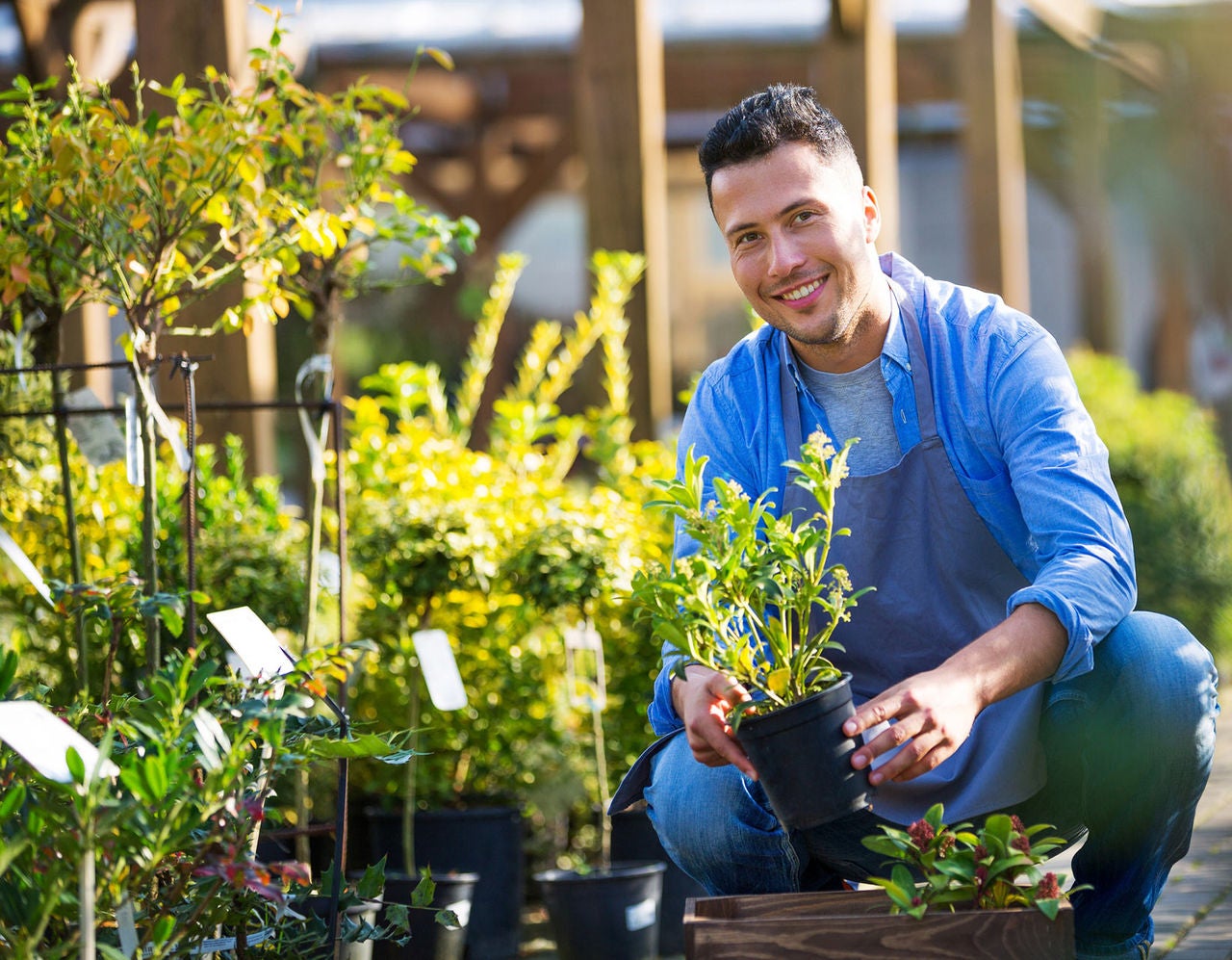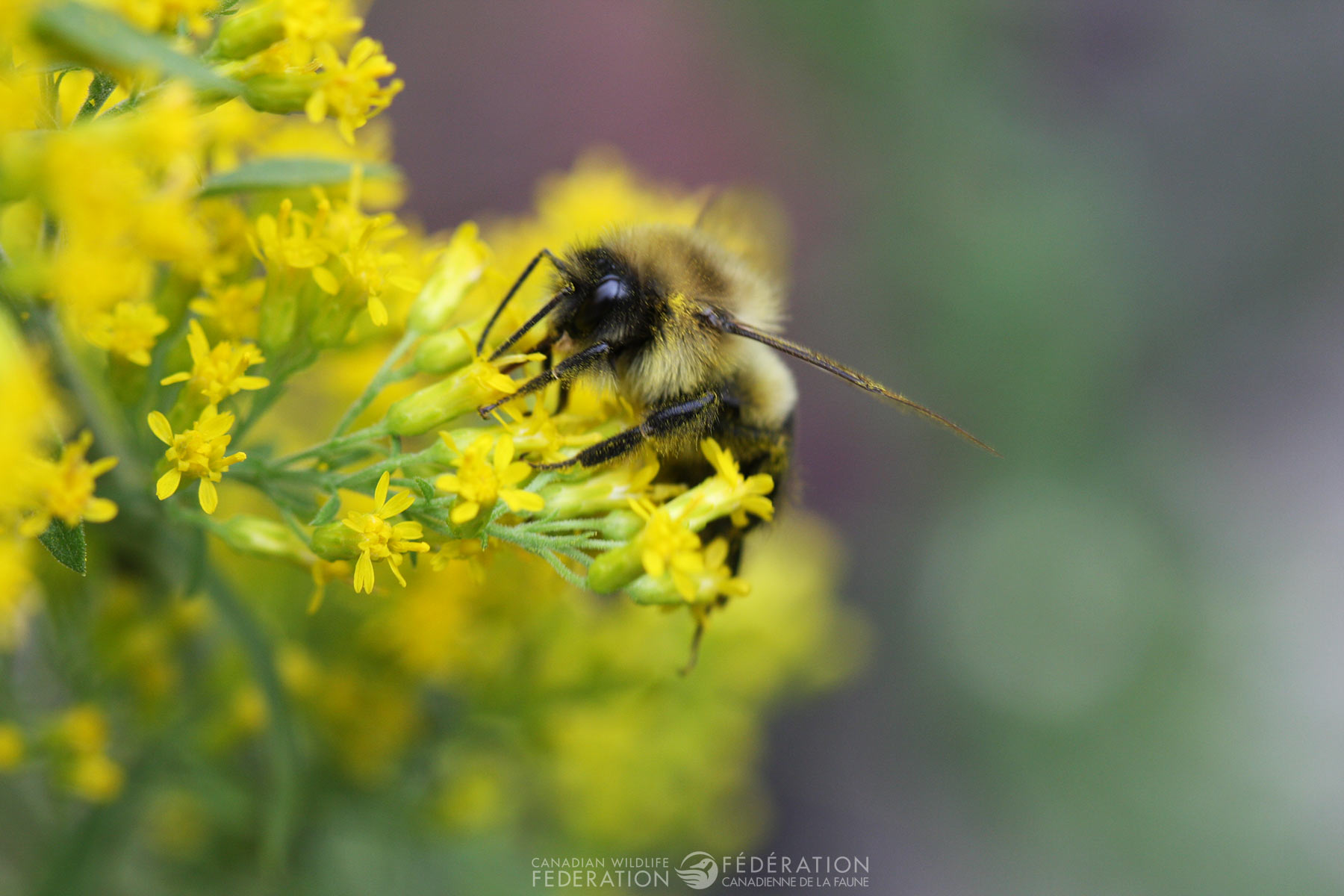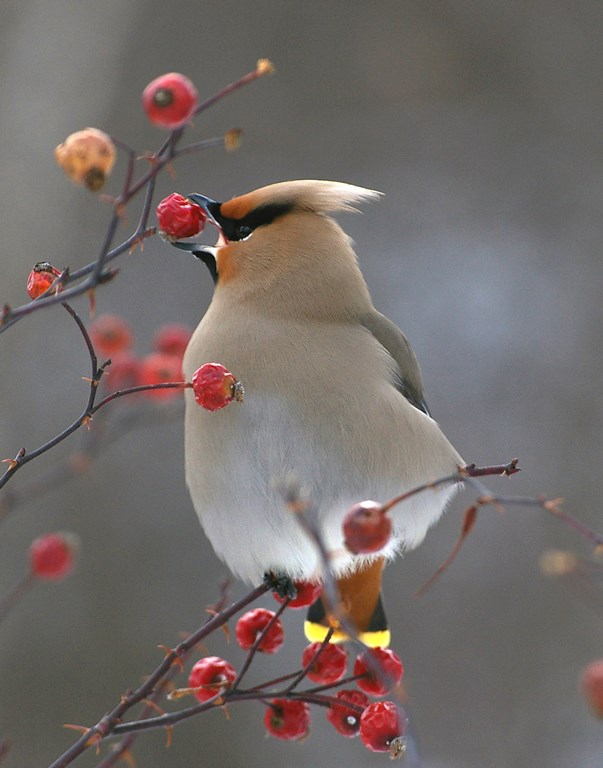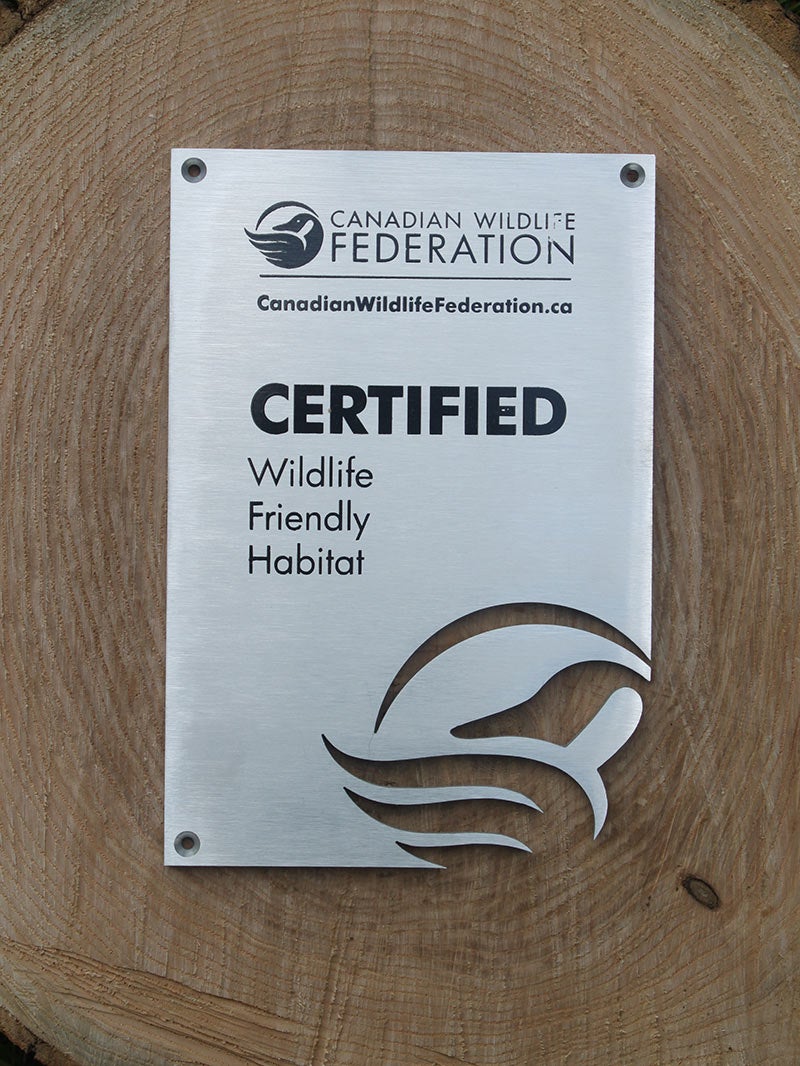Why is wildlife-friendly gardening important?
Gardeners have an important opportunity to make a difference in their community and beyond. By incorporating wildlife-friendly elements in their outdoor space, they are making a significant contribution to the conservation of Canada’s wildlife and wild spaces. These simple acts support species at risk and many others that we need for pollination, pest control and decomposition services. It also helps keep our ecosystems healthy and functional for us now and for generations to come.
Help your clients certify their property as “Wildlife-friendly Habitat!” Read below for important details and complete the application form when ready.

Why include wildlife-friendly features with your landscaping service?
In helping clients modify their outdoor space, you have an important opportunity to create a beautiful space that attracts and supports our local and migratory wildlife.
You can also stand out in the market, meeting this rising demand from people wanting to help pollinators, grow native plants, attract birds and garden more ecologically.
What are the key elements?
Wildlife-friendly gardening includes the habitat elements of food, water, shelter and earth-friendly gardening methods. More information can be found in the links below which includes a handout for you and your clients.
Food and Shelter
Certified properties need to have natural sources of food and shelter, with supplemental bird feeders, for instance, as an extra. For example, food can come from native shrubs that provide flowers for pollinators and then fruit for birds. Shelter also comes from vegetation for many species, as does allowing leaf litter to remain below the tree, imperative for many of our butterfly and moth species to finish their development, as with the Hummingbird Clearwing Moth.
Diversity is key and so the larger the property, the more opportunity to increase the plant types (with native trees, shrubs, perennials and ferns) and species (native maples and oaks, pines and spruces, asters and columbines). This diversity creates for more layers and together with plant type and species diversity support the equally diverse animals that can naturally live in the same space.
With these elements of food and shelter come very important considerations in plant choices such as including regionally native plants, avoiding invasive species, avoiding plants grown with neonicotinoids and plants that are cultivated to the point of no longer being fertile. Please refer to the downloadable document that you can share with clients and the other helpful links below (under “Resources”) for more information.
Water
Water can be a simple dish of water or fancy bird bath, but it would need to be maintained with regular cleaning and the water would need to be changed regularly to avoid breeding mosquitoes and unhealthy bacteria.
Earth-friendly Gardening Methods
While you as a landscaper can install the habitat elements, this fourth component will involve some education with clients that normally rely on pesticides which is the main consideration of this component. By avoiding pesticides, we keep both the animals safe as well as their food source (for example, the many birds that need insects not only for themselves but also for their young). Please note that this also applies to many treatments used to ward off mosquitoes and other undesirables, which have been shown to harm and kill nearby bees, birds and amphibians. Our website has lots of information to help you and your clients create a safe garden, for both humans and animals alike.
Clients may enjoy learning about the other earth-friendly gardening methods of composting, mulching, grass cycling and conserving water involve working with nature which ultimately saves time and supports a healthy garden.
How your clients can get certified
Your clients can get official recognition for creating and maintaining a wildlife-friendly garden with CWF’s Garden Habitat Certification. If certified, your client’s property will be considered “Wildlife-friendly Habitat” and they will be eligible to purchase a sign to celebrate their efforts. Signs also indicate to passer-byers that there is purpose to their planting and raises awareness in the community. As a landscaper, you have two options for helping your client get certified. First, you can share this information with your client so they can certify at their leisure. Or you can apply for certification on their behalf. If you do it for them, it is imperative that they are fully aware of the implications such as not using pesticides, maintaining a water source, like a shallow dish, should one not be installed on their property.
1
Educate and inspire your clients on the benefits, ease and beauty of having a wildlife-friendly garden (if they don’t already know).
2
Install natural sources of food and shelter with a diversity of vegetation and other options, as noted on the Garden Habitat Certification Application Form. Guide, if needed, in helping your client understand how to manage their space without pesticides and other earth-friendly gardening methods that might apply to their situation.
3
Provide them with the links included below (possibly printing the PDF “Gardening for Wildlife” ) to learn more. Provide the link for applying online or for downloading the application form to print if they prefer a hard copy.
OR
Complete the online application for your client. Note that we need both your information (“Applicant Information”) and your client’s information (“Property Owner Information”) for our files.

Resources
PDF for you to give your client
Links for your client and you to explore
- Garden Habitat Certification home page
- Gardening for Wildlife home page
- How to garden with wildlife in mind
- Native Plant Supplier List
- CWF’s line of neonic-free native plants
- Previously recorded webinars about wildlife-friendly gardening
- Upcoming events
- CWF Gardening for Wildlife Facebook group for sharing stories, tips and photos as well as
- CWF’s Gardening for Wildlife iNaturalist page for sharing and getting help in identifying visiting wildlife.
Sign Up for Timely Articles and Tips
Our e-newsletter Grow Wild features Canadian animals and plants as well as some edible plants and how to grow them in harmony with nature. It also provides tips, project ideas or family crafts suited to that season as well as sharing photos of wildlife-friendly gardens across the country. Sign up to join more than 47,000 readers in this gardening community.
- 0
- 1
- 2
- 3
- 4
- 5






